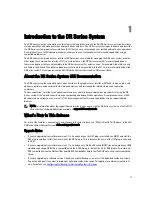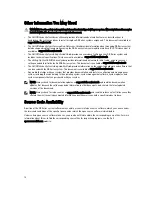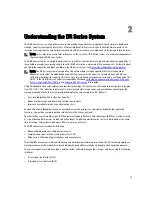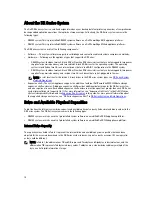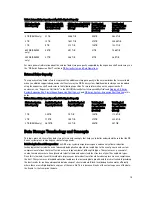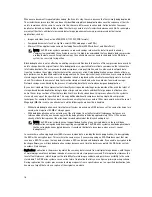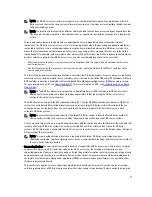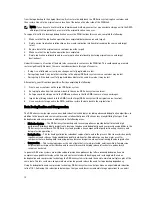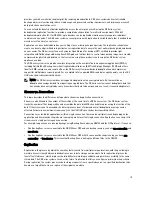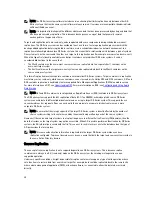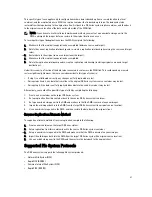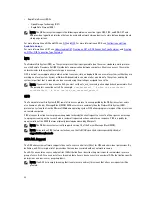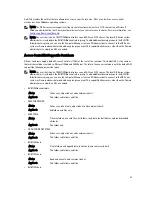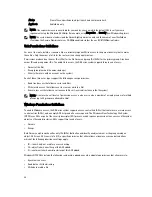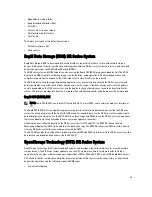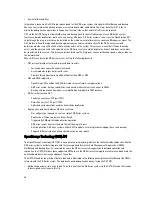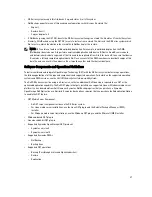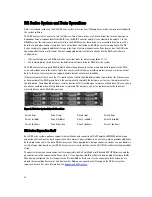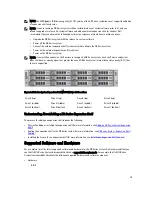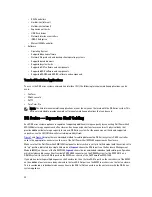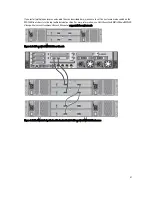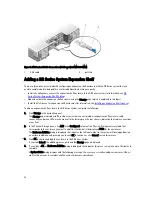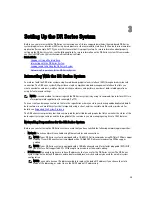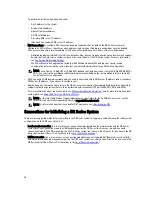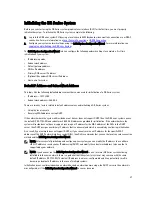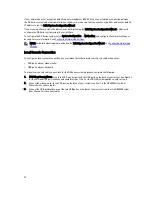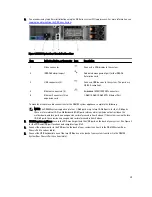
Allows
Create files and write data, object inherit, and container inherit.
Applies to
Subfolders only.
NOTE: If these permissions are unsuitable for your needs, you can modify the default ACL to suit your own
requirement using the Windows ACL Editor (for example, using Properties
→
Security from Windows Explorer).
NOTE: The system does not understand the Owner Rights permission and sets the owner of new files/folders
created by the Domain Administrators as DOM\Administrator rather than as BUILTIN\Administrators.
Unix Permissions Guidelines
For a user to create, delete, or rename a file or a directory requires Write access to the parent directory that contains
these files. Only the owner of a file (or the root user) can change permissions.
Permissions are based on the user IDs (UIDs) for the file Owner and group IDs (GIDs) for the primary group. Files have
owner IDs and group owner IDs. To enable Unix access, the DR Series system supports three levels of users:
•
Owner (of the file)
•
Group (group in which the owner belongs)
•
Other (other users with an account on the system)
Each of these three user types support the following access permissions:
•
Read (read access that allows user to read files)
•
Write (write access that allows user to create or write to a file)
•
Execute (access that allows user to execute files or traverse directories in the filesystem)
NOTE: A root user has all levels of permission access, and a user can be a member of a single group or of multiple
groups (up to 32 groups are allowed in Unix).
Windows Permissions Guidelines
To enable Windows access, the DR Series system supports access control lists (ACLs) that contain zero or more access
control entries (ACEs), and an empty ACE list grants all access requests. The Windows New Technology File System
(NTFS) uses ACLs as part of the security descriptor (SD) process, which requires permissions to access such filesystem
objects as files and directories. ACLs support two levels of users:
•
Owners
•
Groups
Both Owners and Groups have Security IDs (SIDs) that define and identify an object owner or the group owning an
object. ACEs in an ACL consist of a SID, a specific permission that either allows or denies access and also defines
which of the following inheritance settings apply:
•
IO—inherit-only: not used for access checking.
•
OI—object inherit: new files get this ACE added.
•
CI—container inherit: new directories get this ACE added.
Windows NTFS ACLs include the following read, write, append, execute, and delete permissions that allow users to:
•
Synchronize access
•
Read data or list the directory
•
Write data or add a file
24
Summary of Contents for DR series
Page 1: ...Dell DR Series System Administrator Guide ...
Page 10: ...10 ...
Page 34: ...34 ...
Page 138: ...138 ...
Page 160: ...160 ...


